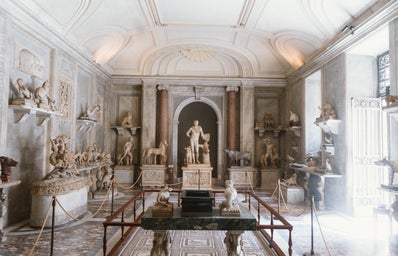Delhi is a city of contrasts, where the ancient and the modern coexist in perfect harmony. From the bustling streets to the breathtaking monuments, there’s no shortage of sights and sounds, and feelings to capture one’s imagination. But for those looking for a deeper understanding of the city’s rich history and culture, there’s no better place to start than its museums.
Whether you’re an art enthusiast, a history buff, a curious tourist, a casual visitor, a student, a family, a researcher, or a critic, there’s something for everyone in the museums of Delhi. These institutions offer a wealth of knowledge and inspiration, catering to a diverse range of interests and passions.
For art lovers, the National Museum and the National Gallery of Modern Art are must-visit destinations. The former houses a vast collection of art and artifacts from all over India and beyond, including sculptures, paintings, textiles, and jewelry. The latter is dedicated to contemporary Indian art, showcasing works by some of the country’s most celebrated artists.
For history buffs, the Indian War Memorial Museum, the National Handicrafts and Handlooms Museum, and the National Museum of Natural History are all worth exploring. The former commemorates the Indian soldiers who fought in various wars, while the latter showcases the rich diversity of India’s flora and fauna. The Handicrafts and Handlooms Museum provides a fascinating insight into India’s rich textile heritage.
Science enthusiasts should head to the National Science Centre, where they can marvel at the wonders of the natural world and learn about the latest scientific discoveries. Children, in particular, will love the interactive exhibits and hands-on activities on offer here.
Families with young children will also enjoy the Nehru Planetarium, where they can explore the mysteries of the universe through immersive shows and interactive exhibits. The Indira Gandhi Memorial Museum is another family-friendly destination, providing a fascinating glimpse into the life and legacy of one of India’s most iconic leaders.
For those interested in cultural heritage, the National Handicrafts and Handlooms Museum, the Crafts Museum, and the National Museum are all worth a visit. These institutions showcase the rich diversity of India’s art and crafts, providing a window into the country’s many regional cultures and traditions.
Sports enthusiasts should not miss the National Sports Museum, which houses an impressive collection of sports memorabilia and artifacts from some of India’s greatest athletes and sporting events. For those interested in technology, the National Science Centre and the Nehru Planetarium both offer fascinating insights into the history and impact of technology on society.
Museums have historically been perceived as elitist institutions that are disconnected from popular culture and inaccessible to the masses. This perception is not unfounded and can be attributed to various factors. One such factor is the admission fees that can limit access for low-income individuals and families. This can create a sense that museums are only for the wealthy, educated, or privileged. Another factor is the technical language and academic jargon that is often used in museums, which can be difficult for the general public to understand. This can make it challenging for visitors to engage with exhibitions and feel included in the museum experience. Additionally, the lack of diverse representation in collections and exhibitions can reinforce the notion that museums are exclusive institutions. Moreover, some museums have been criticized for perpetuating colonialist attitudes by displaying artifacts that were acquired through questionable means or framing certain cultures as exotic or primitive. This can reinforce stereotypes and contribute to a sense of alienation for visitors from those cultures.
To address these issues, many museums have taken significant steps toward making their collections and exhibitions more accessible and inclusive. Some museums have lowered admission fees or offered free admission days to make it easier for people of all backgrounds to visit. Others have made concerted efforts to incorporate diverse perspectives and voices into their exhibitions and programs.
However, much more work remains to be done to make museums more welcoming and accessible to all. This includes not only addressing issues of accessibility and representation but also actively engaging with and incorporating the perspectives and experiences of marginalized communities. In conclusion, museums play a critical role in preserving and sharing cultural heritage and knowledge. To ensure that they serve as inclusive spaces that are accessible to all, it is crucial to recognize and address the perception of museums as elitist institutions. Only then can museums continue to evolve as institutions that connect with and serve the needs of diverse audiences.


